Accompanying Person Programme
Part I:
- Accompanying person registered to Part I can benefit from the touristic tours organised from Monday 22nd to Wednesday 24th of August.
Part I & II:
- Accompanying person registered to Part I & II can benefit from the touristic tours organised from Monday 22nd to Friday 26th of August.
Programs and schedules are subject to change and may be modified without prior notice before the congress
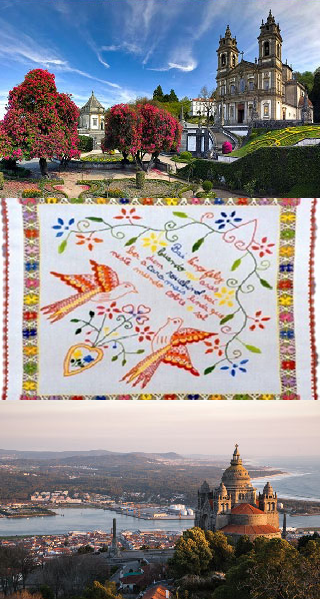
Please find below a short information on the tours’ details.
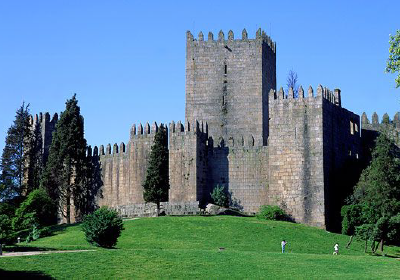


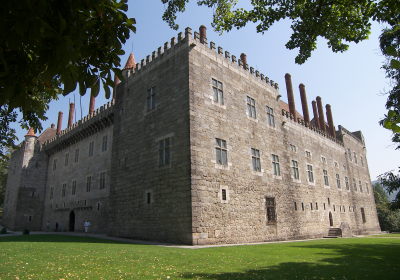
Guimarães is a town with a glorious historical past, whose history is linked to the founding of Portugal’s national identity in the XII century.
The historical centre in the area that was within the Guimarães city walls, associated with the formation and identity of Portugal, was classified a World Heritage site based on the originality and authenticity applied in its restoration.
For a moment you might imagine yourself to be in a mediaeval setting, where the nobility built their houses over time, such as the Mota Prego house, the Vila Flor and Toural palaces, and the many others that give Guimarães its unique atmosphere.
Guimarães was the European Capital of Culture in year 2012.
The tour starts with visiting Santa Marinha Monastery and Gardens from XII century Augustin Convent. In the space formerly occupied by the cellars and barns of the Monastery, now stands the Restaurant of the Pousada of Guimarães: an imposing room with gentle stone arches where your lunch will be served.
After the lunch the tour will continue visiting Ducal Palace of Bragança (Paço dos Duques de Bragança) that was ordered built in the XV century. The Ducal Palace of the Bragança is one of the most visited Museums in Portugal both by Portuguese as well as foreigners.
After visiting Ducal Palace of Bragança you will walk towards the historic centre of Guimarães within the town walls – the UNESCO World Heritage. Itinerary in the historic centre comprises sightseeing of Convent of Santa Clara, Santa Maria Street – one of the first streets built in Guimaraes and which actual name is referred already in XII century documents, São Tiago Square, Oliveira Square – the central square in the historic centre (included visit to church Nossa Senhora da Oliveria), Largo da Republica do Brasil, São Damâsio Avenue, Toural Square – the town’s central square, entering again the historic centre through one of the town’s gates, to ACIG (Commercial and Industrial Association of Guimarães) for refreshment.
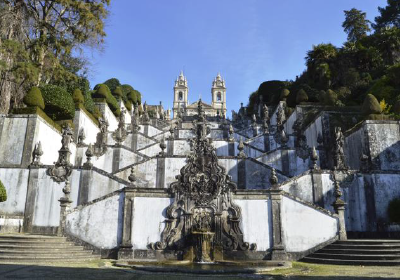

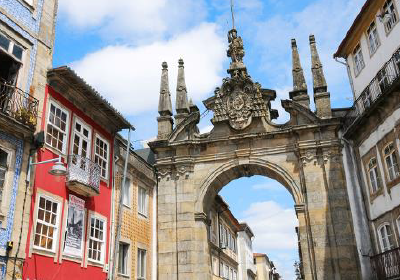

Built more than 2,000 years ago, “Bracara Augusta” was, as the name indicates, founded by the roman emperor Augustus. It was located on one of the main Roman roads in the Iberian Peninsula, and later given the status of capital of the Roman province of Gallaecia, present day Galicia. The Braga Diocese is the oldest in Portugal and, Braga’s Cathedral is also the oldest in the country and was built in the XI century by the parents of Portugal’s first King, D. Henrique and D. Teresa, who are buried there. The city is also known as the “Portuguese Rome” or the “City of the Archbishops”, for its concentration of religious architecture and for having two archbishops. Braga is the biggest religious centre of the country, known for its Baroque churches, for the splendorous houses from the XVIII century and for its elaborated gardens and parks.
Braga is also considered Capital of “baroque” in Portugal.
Braga was the European Capital of Youth in year 2012.
The tour starts with visiting Historic centre. Itinerary in the Historic centre comprises sightseeing of the Braga appreciating different architectural styles of which the Baroque style is dominant. The itinerary passes by Republica Square, Souto Street, Santa Bárbara Garden, Largo do Paço – and University of Minho Rectorate (XIV-XVIII century) (including visit to Medieval Hall, and Noble Hall), Cathedral of Braga (beginning of construction XI century), Carlos Amarante Square and museum Casa dos Biscaínhos.
After Historic centre you will be driven to the Bom Jesus Sanctuary and Park where you will have lunch in the Tea House of Bom Jesus Hotels. After lunch you can enjoy the monuments of Bom Jesus Sanctuary, which is one of the landmarks of Portugal and the surrounding garden with belvedere over Braga.
The tour will continue with visit to the Palace of Raio. The Palace of Raio is an example of the late Baroque, with early Rococo style of decoration by Portuguese architect André Soares, notable for his influence in the northern Baroque movement.

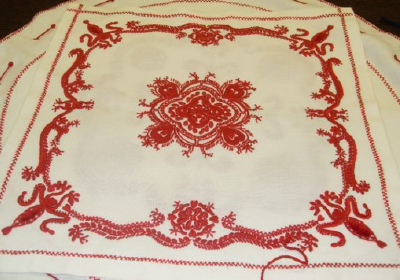
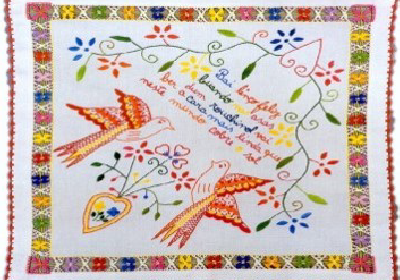
Minho region is also rich with archaeological sites since pre-historic periods. One of the most important prehistoric sites in Portugal is the site of “Citânia de Briteiros” located between Braga and Guimarães. The archaeological ruins of Briteiros are a remarkable proof of the existence of an important early settlement of pre-Roman origin, belonging to the general type of so-called “forts” (Castro) in the northwest of Portugal. Show clearly characters of Celtic culture, though heavily Romanized at the beginning of the Christian era.
Along centuries the region of Guimarães and Braga developed to nowadays one of the most industrialised regions of Portugal. Guimaraes belongs to the Valley of river Ave (‘vale do Ave’) which has special importance in the history of industrialization of Portugal since XIX century, making it a zone of the singular importance for the industrial heritage of Portugal. Today, Guimaraes continues to be one of the most industrialized municipalities in Portugal with primary industries from so-called “traditional” industrial sectors of which the most emblematic for the region of Guimarães are textile industry, shoe industry, cutlery, manufacturing and handicraft (jewellery, embroidery). Companies from Guimaraes and Valley of river Ave are strongly oriented to export to the world-wide markets, providing to the market products of the highest quality for many of the world leading brands and presenting their own international brands as well.
The tour starts with visiting the archaeological ruins of Citânia de Briteiros, on top of a small hill with spectacular views over the Ave River valley. Citânia de Briteiros is a large stone-walled settlement that was built some 2,000 years ago by Iron Age peoples of the northern Iberian peninsular. Although primarily known as the remains of an Iron Age proto-urban hill fort (or oppidum), the excavations at the site have revealed evidence of sequential settlement, extending from the Bronze to Middle Ages. The Briteiros site is called a citânia or cividade (from Latin civitas, for city), due to its large size and city-like structure.
After visiting Citânia de Briteiros, the lunch will be served in one of the restaurants in Guimarães.
In the afternoon the tour will take you to visit one of the largest textile factories to discover how some of the fine products used in many homes and by many persons worldwide are produced. You will see how the raw material is transformed, step-by-step, into the finest pieces appreciated by customers worldwide, like leading world brands such as Ralph Lauren, Purification Garcia, and others, as well as for the worldwide famous stores such as Macy’s.
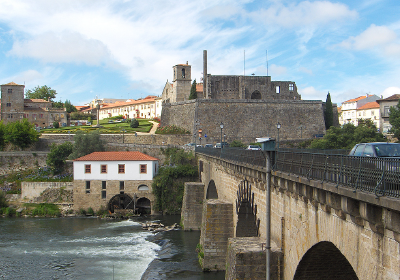
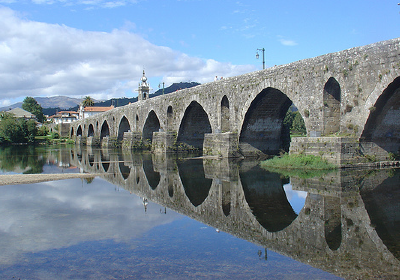


Minho is a north-western part of Portugal with dense vegetation and profound historic wealth spanning over all historic periods starting already from Neolithic Age. You may found historical monuments practically on every step of the region, where these combine with the rivers, waterfalls, vineyards and fertile lands, farms and urban centres. Minho region is also called “Minho Verde” (Green Minho). Starting from this part of country, from the XII century, the Portuguese kingdom was extended to the south.
Besides the cultural experience, visitors may enjoy abundant gastronomy, light and acidulous wines – Vinhos Verdes -, made from protected and endogenous grape sorts, and other rich wines, and a variety of handicrafts that mingles the shine of the filigree with the colour of the local embroideries.
A perfect visit to Minho region should not miss the beautiful long sand beaches along the Atlantic Ocean, called “Costa Verde” (Green Coast).
In this tour, after leaving the hotels by bus, the first stop will be the town Ponte de Lima, about 45km to north from Braga. You can discover Ponte de Lima, the most ancient charted villa in Portugal, and its historic centre, including sightseeing of Ponte Velha – the historical bridge with original roman construction, which crosses the River Lima into the town, Camões Square (Largo de Camões) which is the most emblematic point of the town, with fountain which construction was finished in 1603. The tour continues through the narrow streets of the historic centre sightseeing a number of historic buildings such as the medieval Tower of Cadeia Velha from XIV century.
After the historic centre the visit of Ponte de Lima will continue by visiting the most important winery of Ponte de Lima region: Adega de Ponte de Lima. Here you will discover how the famous type of wine Vinho Verde is produced and you will taste different types of Vinho Verde wines, widely appreciated. In Adega de Ponte de Lima, the regional dishes will be served for your lunch.
The tour will continue to the town of Viana do Castelo, the jewel of the coast of Minho. The town is famous for its handicrafts and colourful regional costumes. The itinerary will start at the belvedere Santa Luzia from which you can appreciate a wonderful view over Viana do Castelo, mouth of river Lima to the Atlantic Ocean, and long sand beaches along the Atlantic coast. Then, you will visit historic centre of Viana do Castelo, with a number of historic buildings from different epochs, and the Costume Museum (Museu do Traje) and Museum of Decorative Arts (Museu de Artes Decorativas).
Finally, going back to Guimarães and Braga, you will pass by bus though the towns of Póvoa de Varzim and Vila do Conde sightseeing the crowded beaches and to appreciate the beauty of Atlantic Ocean.

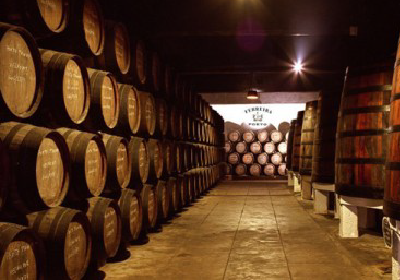

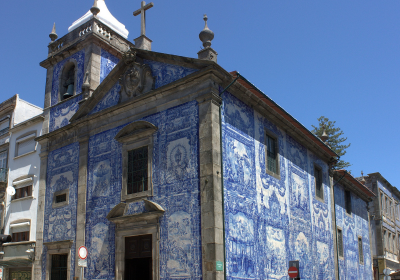
Porto is the second-largest city in Portugal, after Lisbon, located along the Douro river estuary in Northern Portugal. Porto is one of the oldest European centres, and its historical core was proclaimed a World Heritage Site by UNESCO in 1996.
Porto has always been a mercantile city, and this is evident in the style of the buildings lining the Avenida dos Aliados, the core of the downtown area. The centre of town, unlike other major Portuguese cities, which tend towards the baroque, is granite and monumental. The city is quite varied architecturally, with medieval as well as modern living side by side. Nowadays, Porto is considered one of the centres of culture and art as well.
The world famous Port Wine is named for Porto, since the metropolitan area, and in particular the caves of Vila Nova de Gaia, are responsible for the packaging, transport and export of this world-wide famous wine.
This tour will start the visit to Porto from Boavista Square (Rotunda de Boavista) with Music Hall (Casa da Música) that is example of the (beginning of) XXI century architecture and which is an icon in the city.
Itinerary continues by bus along the Avenida de Boavista, Castelo do Queijo, Anémona, and along the Atlantic Ocean coast, turning along river Douro coast to Ribeira. Ribeira is the old port within the historic centre of Porto, also classified as the UNESCO world heritage. Here you will walk along the Ribeira, pass the bridge D. Luís I, an icon in the city, over Douro River, to the Port wine caves, in Vila Nova de Gaia, on the opposite bank of the Douro River. There you will visit one of the Port wine caves with Port wine tasting. The lunch will be served in the zone the Port wine caves.
Itinerary continues by bus sightseeing centre of Porto, and to Rua Santa Catarina, the most emblematic commercial street in Porto, where you will enjoy free time, after which you will go back to hotels in Guimarães and Braga.
Note: In the event of unforeseen circumstances the organising committee reserves the right to change the venue and programme.
